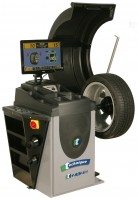Tarox’s extreme brake testing protocol
Performance brake manufacturer Tarox has revealed details of what it is calling its extreme brake testing protocl. While motorsport can be a benchmark for out and out performance, and a breeding ground for new technology, the performance aftermarket has its own set of unique requirements that cannot be tested in motorsport. In this way Tarox is striving to ensure that its performance brake range not only performs like it has just been swapped from a race car but that it’s as hassle free as high quality OEM parts found on most modern day cars.
This new programme, usually only the reserve of high-level OEM suppliers, reveals an interesting insight into the company’s commitment to the performance aftermarket, as well as its desire to create hugely effective motorsport parts.
Tests on products are conducted on a specially created test bed housed inside a temperature controlled thermal cell, known now by Tarox engineers as the ‘torture chamber’. Tarox Engineers now have a much wider range of testing conditions in which to evaluate the efficacy of each product line. While the company’s mantra is clearly to create the most effective braking systems, and at the lowest possible weight, it’s clearly striving to show that these qualities can also work effectively in the most severe of weather conditions, as well as under extreme abuse on road or track, without the need for any special maintenance.
The series of ‘Burn or Freeze” tests instigated by Tarox allows the firm’s engineers to check the duration of the caliper and pad against the stresses derived from application of pressure cycles associated with thermal cycling. Or, put simply, it is a repeatable test on the brake caliper to check the resistance of all the components to extreme temperatures and intense use at the same time.
To conduct this test, each caliper, complete with pads, is fixed on a support – reproducing the mounting point on the vehicle, and then placed within a thermal cell. The cell is cycled between temperature extremes of 120°c and – 40°c. The caliper is then made to perform 1,000 simulated retardations every hour, for a continuous 36 hour session, over 3 full heat cycles of 12 hours each. So, in total, each test sees 36,000 simulated stops over one-and-a-half days, across an ambient temperature range of 160°c.
Commenting on the new testing programme, Valeria Taroni, managing director of Tarox, said “We are delighted to share the results of this in-house testing with our dealers and end-users. There is no requirement or stipulation in the performance aftermarket to subject our products to such torture, but we feel as a company, that we should prove the engineering integrity of every component we design and manufacture. I know it will give our dealers and customers great confidence.”



Comments